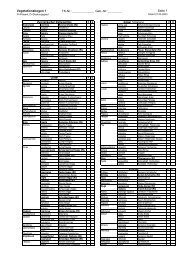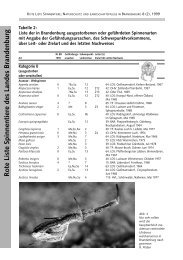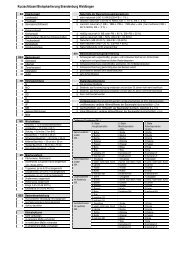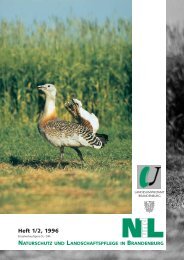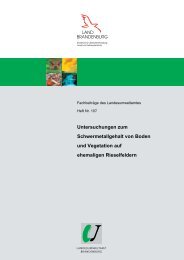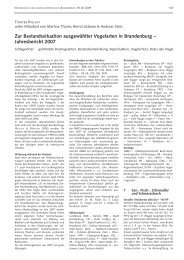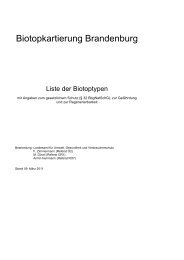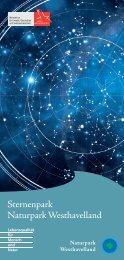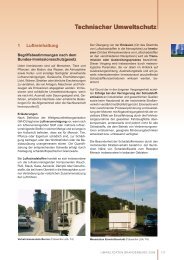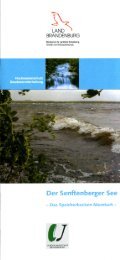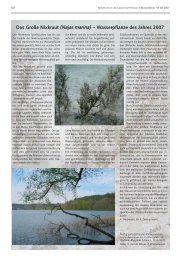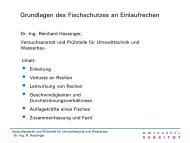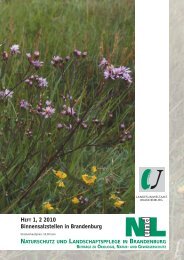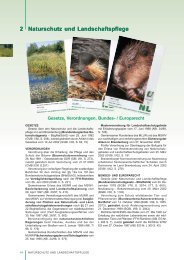the Brandenburg ostrich - Landesamt für Umwelt, Gesundheit und ...
the Brandenburg ostrich - Landesamt für Umwelt, Gesundheit und ...
the Brandenburg ostrich - Landesamt für Umwelt, Gesundheit und ...
Create successful ePaper yourself
Turn your PDF publications into a flip-book with our unique Google optimized e-Paper software.
Conservation 29Fosterlings in needOver centuries humans have changed <strong>the</strong> habitatof <strong>the</strong> Great Bustard and its entire plant andanimal world. Predator-prey relationships and competition between <strong>the</strong> individual species have tofind a new balance <strong>und</strong>er constantly changingconditions – ecologists speak of “dynamic equilibrium.”Many factors have led to <strong>the</strong> increasedfrequency in <strong>the</strong> last decades of animal speciesthat belong to <strong>the</strong> predators of bustards and<strong>the</strong>ir eggs, such as foxes and ravens. Additionally<strong>the</strong>re are invasive species such as <strong>the</strong> raccoon andraccoon dog that pose potential risks. This shift in<strong>the</strong> species structure primarily has negative effectson <strong>the</strong> reproduction of <strong>the</strong> Great Bustards, whichwould have reached rock bottom were it not forconservation efforts.This is a problem for many o<strong>the</strong>r bird species thatbrood on <strong>the</strong> gro<strong>und</strong>, not only in <strong>Brandenburg</strong>,but also in large parts of Central Europe. These include<strong>the</strong> lapwing, grey partridge, and <strong>the</strong> curlew.While foxes can also be a danger to adult bustards, raccoons (middle) and raccoon dogs (right) pose risks primarily to <strong>the</strong> clutches andyoung animals.



